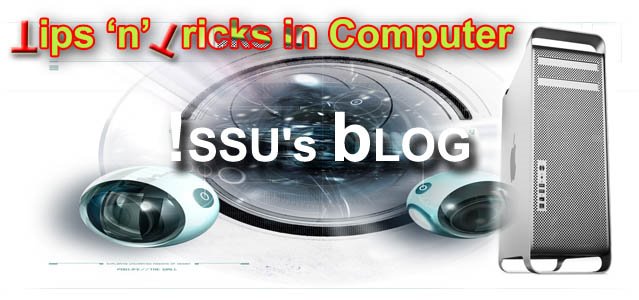Now for a refresher course on hard drive connections. When connecting more than one hard drive to a computer on the same IDE controller, you generally have to assign one as the primary (master) and one as the secondary (slave). You do this by changing the jumpers on the hard drive next to the power connector. Normally, the drive will have a diagram to let you know which jumper should be set for a master drive and which to set for a slave drive. You'll notice in the picture below the jumpers are circled on the end of the drive and the top of the drive shows the diagram to follow.
After changing the jumpers, connect the hard drive cable from the motherboard to the hard drives. Under normal circumstances, the end of the drive cable attaches to the Master hard drive, while the inside connector on the cable connects to the Slave drive.
What About Cable Select?
Cable Select (CS) settings were designed to make it easier to connect hard drives because you didn't need to bother with setting the Master/Slave jumpers. You just connect the drives and depending on where you connected them to the cable the computer would know which is Master and which is Slave...in theory. Now comes the confusing part.
With cable select, you first needed a special 40 conductor IDE cable that would determine master/slave connections. This was different from the normal IDE cables at the time. Also, the Master connector on CS cables was the inside connector not the end connector. This made for a very confusing switch from everyday master/slave configurations.
80 conductor Ultra DMA cables WILL determine the Master/Slave settings through Cable Select however. So as technology advances, Cable Select as a concept may still catch on. With the newer Ultra DMA cables, you can set both drives to Cable Select (CS), connect them and they will work. Another change with the 80 conductor cables, the Master connector is on the end of the cable where it should be. In situations where you are using a newer Ultra DMA drive and cable, you can use Cable Select or standard Master/Slave jumper settings and the drive will boot properly.
In my scenario to start this article, the change from Master/Slave to Cable Select for this particular computer reduced the Windows boot time by more than 2 minutes.
For more information on Master/Slave settings versus Cable Select visit the following pages:
Mike's Hardware: How to Connect IDE Hard Drives
Configuration using Cable Select
UnixWiz.Net: Using IDE Cable Select
What About Cable Select?
Cable Select (CS) settings were designed to make it easier to connect hard drives because you didn't need to bother with setting the Master/Slave jumpers. You just connect the drives and depending on where you connected them to the cable the computer would know which is Master and which is Slave...in theory. Now comes the confusing part.
With cable select, you first needed a special 40 conductor IDE cable that would determine master/slave connections. This was different from the normal IDE cables at the time. Also, the Master connector on CS cables was the inside connector not the end connector. This made for a very confusing switch from everyday master/slave configurations.
80 conductor Ultra DMA cables WILL determine the Master/Slave settings through Cable Select however. So as technology advances, Cable Select as a concept may still catch on. With the newer Ultra DMA cables, you can set both drives to Cable Select (CS), connect them and they will work. Another change with the 80 conductor cables, the Master connector is on the end of the cable where it should be. In situations where you are using a newer Ultra DMA drive and cable, you can use Cable Select or standard Master/Slave jumper settings and the drive will boot properly.
In my scenario to start this article, the change from Master/Slave to Cable Select for this particular computer reduced the Windows boot time by more than 2 minutes.
For more information on Master/Slave settings versus Cable Select visit the following pages:
Mike's Hardware: How to Connect IDE Hard Drives
Configuration using Cable Select
UnixWiz.Net: Using IDE Cable Select




1 comments:
A great post for this specific topic.
The deletion of details nearly always leads an individual to a a feeling of discontent.
A variety of recovery computer software programs happen to be designed a by the experts, to make certain that a person will be able to simply retrieve their lost or damaged details.
Just in case of loss of data problem, an individual should have an awareness of ideal data retrieval tool.
recover deleted outlook contacts
Post a Comment